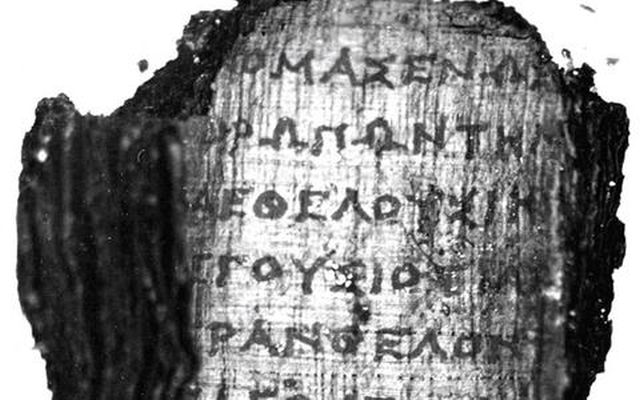The oldest book of Europe, the Derveni papyrus, will be submitted to apply for inclusion in the UNESCO list in the category of "cultural heritage".
It is the only preserved and readable papyrus found in Greek lands and created around 340-320 BC as a copy of an older text from the late 5th century BC. The manuscript was written with a sharp pen dipped in ink and consists of nine parts. The number of the preserved fragments is 266 and they vary in size from a large post stamp to a lentil bean.
In order for the papyrus to be included in the list of UNESCO monuments it must however be displayed in its entirety, not just the part of it that is kept today in the Archaeological Museum of Thessaloniki. The issue of including the whole papyrus in the permanent exhibition was discussed by the Council of Museums, and the position of the Museum is positive.

The papyrus was discovered in 1962 in a nobleman’s grave near the Derveni pass, Thessaloniki. It has been preserved to the present day, although it is divided into parts because it was partially charred. Its enormous significance was immediately assessed by head of the excavations Petros Temelis and subsequently by archaeologist Haralambos Makaronas. Austrian specialist Anton Fackelmann immediately unrolled the cylinder and placed the fragments on an absorbent pad. The papyrus was then sandwiched between two panes, which were subsequently sealed.
Content
The content of the papyrus is extremely valuable and the manuscript is defined as "the most important new piece of evidence of ancient Greek philosophy and religion to come to light since the Renaissance" but the most difficult to read as well.

The first seven columns take us into the world of those who were initiated into the mystical beliefs and cults, as well as into the world of Persian priests. The author turns to those who do not believe in the suffering that they will experience after death, and describes the sacrifices made in honour of the Erinyes and Eumenides, which for him are not gods, but the countless souls of the dead. Then he proceeds to the interpretation of a theogony, an Orphic poem that was not known before the discovery of the papyrus, except in its subsequent variants.
Meanwhile, the collection of the Archaeological Museum of Thessaloniki will be enriched with one more outstanding exhibit.
It is a piece of fabric with gold threads, part of the few ancient fabrics preserved in Greece, which has traces of decoration and purple colour. The fabric is part of the funeral of the 3rd century that has been exhibited in the museum since 2006. It consists of a skeleton of a woman aged about 50-60 years, 1.60 metres tall, mummified with the use of resins and aromatic oils.